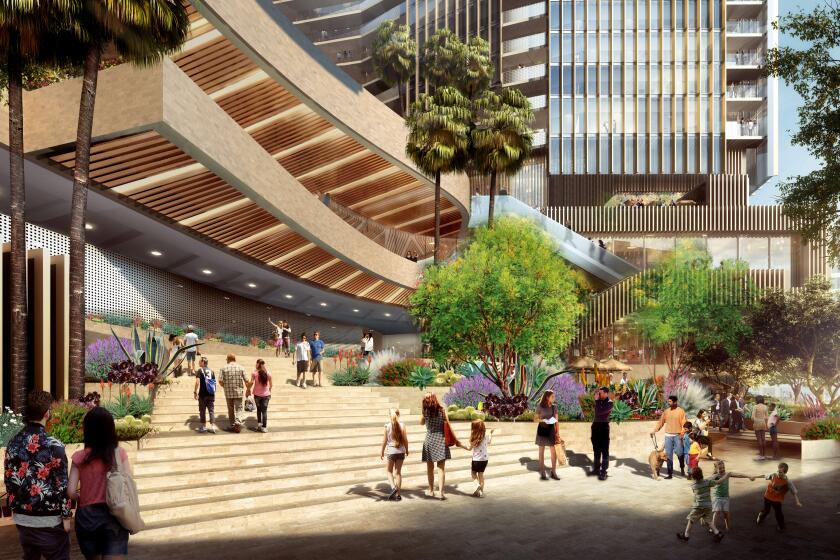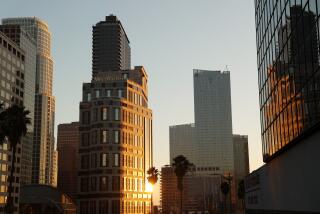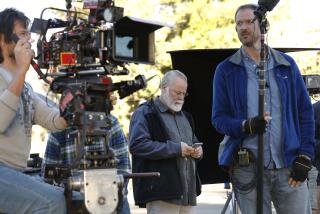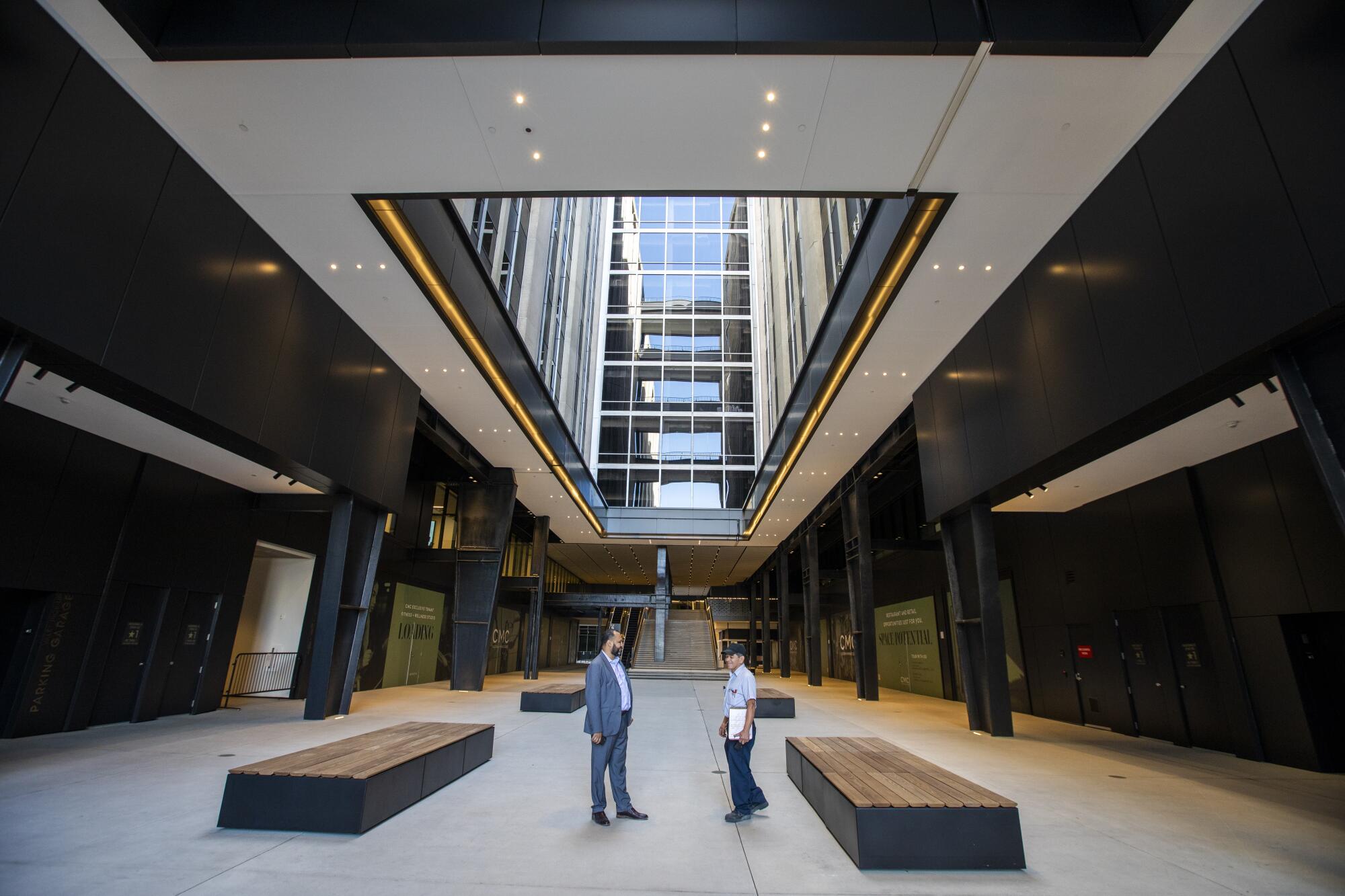
- Share via
People are going back to the office. Not in the same everyday slog they did before the pandemic, but many are back at least a few days a week.
In-office presence varies by industry in Los Angeles County, with tech and entertainment-related businesses in the forefront, but the easing of pandemic safety restrictions in early March has clearly led to an increase in work getting done at the office instead of at home, landlords said.
“Since the mask mandate was lifted, we have seen almost a doubling of daily office populations,” said John Barganski of Brookfield Properties, the largest office landlord in downtown Los Angeles. “That seemed to be the impetus for people to say, ‘Let’s go.’”
Levels of office populations vary among types of businesses, categories of buildings and even the size of companies, with large employers more likely to be back at the office than small ones. But there is one constant: Most people still aren’t going to the office daily because their companies are concocting schedules that allow them to work remotely some of the time.
“Everybody has some version of a hybrid model where it isn’t necessarily five days a week” at the office, Barganski said. “But there are people in our buildings every day, at a much greater magnitude than we’ve experienced throughout the COVID-19 pandemic.”
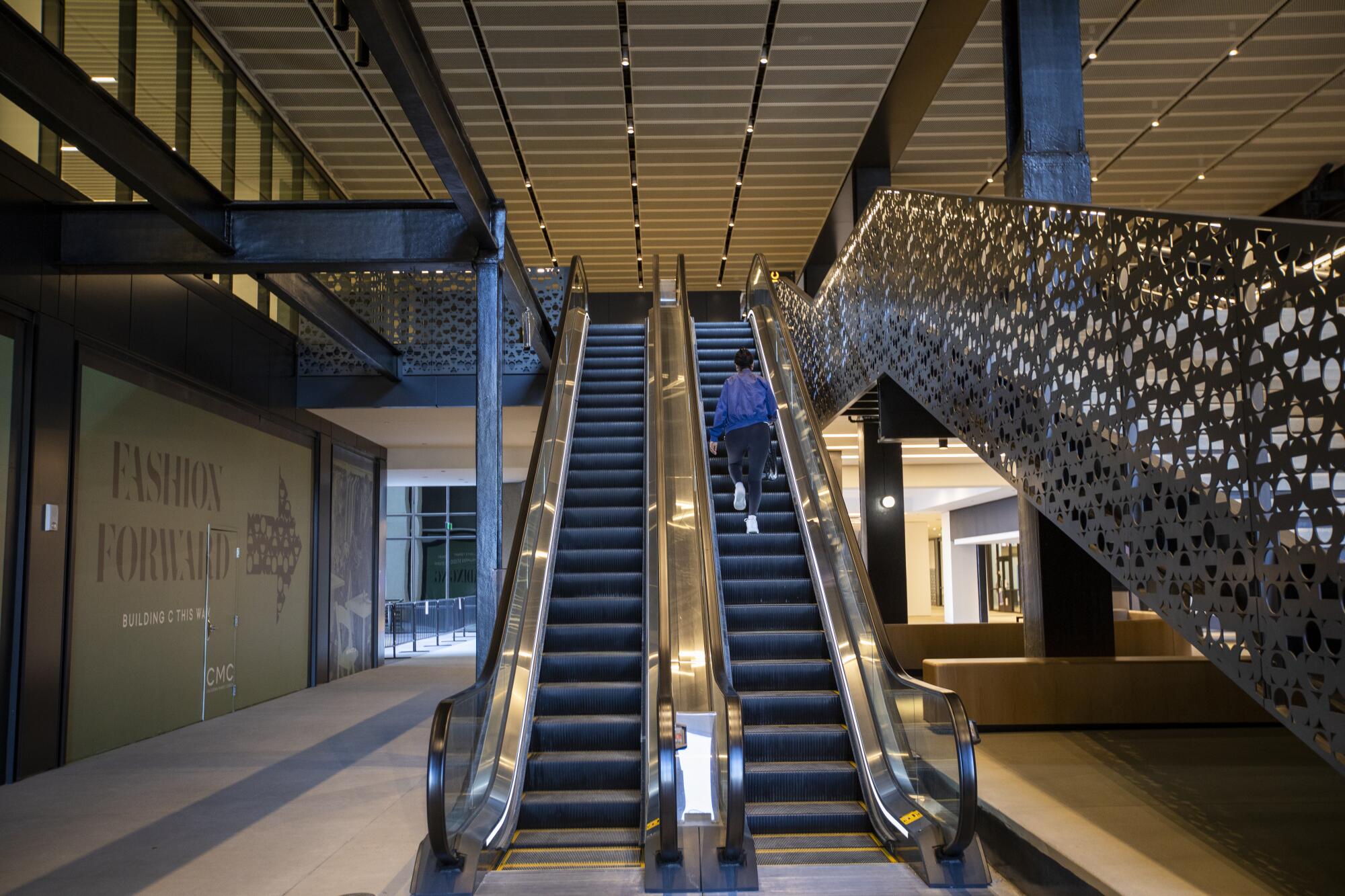
The population in Brookfield’s downtown buildings has reached about 50% of what it was before the pandemic, he said.
Average office population in the country’s largest metro areas has been up and down with COVID-19 surges. According to Kastle Systems, which provides key-card entry systems used by many companies and tracks patterns of workers’ card swipes, the average population hit a low of 14.6% in mid-April 2020. Last week it was at nearly 43%, with Los Angeles slightly below average at 41%, the highest figure yet during the pandemic.
Angels Landing, a $1.6-billion hotel, housing and retail complex that will change the city skyline, aims to open by the 2028 Olympics, the developers said.
In a sign that many employers plan to keep people working together, office leasing was fairly steady in the first quarter. Real estate brokerage CBRE reported a net gain of more than 500,000 square feet of leased space in Los Angeles County as some companies expanded their office footprints.
Companies are often returning to the office without making public proclamations about it, landlord Victor Coleman said, perhaps because they blew through previous announced returns as new surges of the pandemic thwarted vows to return after last Labor Day and then after the Christmas holidays.
Larger companies have generally been more aggressive about returning to the office than smaller ones, said Coleman, chief executive of Hudson Pacific Properties, a Los Angeles office landlord and developer. Hudson Pacific owns more than 50 office buildings on the West Coast, along with three movie studios in Hollywood.
Among its large tenants are tech and entertainment companies, including search engine Google, streaming service Netflix and video game giant Riot Games, where employees recently returned to a Tuesday-through-Thursday work schedule in the office. Rioters, as they call themselves, can also come in on Mondays and Fridays if they want to.
The Riot team was surprisingly adept at working remotely, President Dylan Jadeja said, which was a tribute to their resiliency but raised many challenges and wasn’t the optimum way for the company to operate.
“Strategically, we felt that the collaboration model, the creativity that we needed in our business and the spirit of our company necessitated in-office culture,” Jadeja said.
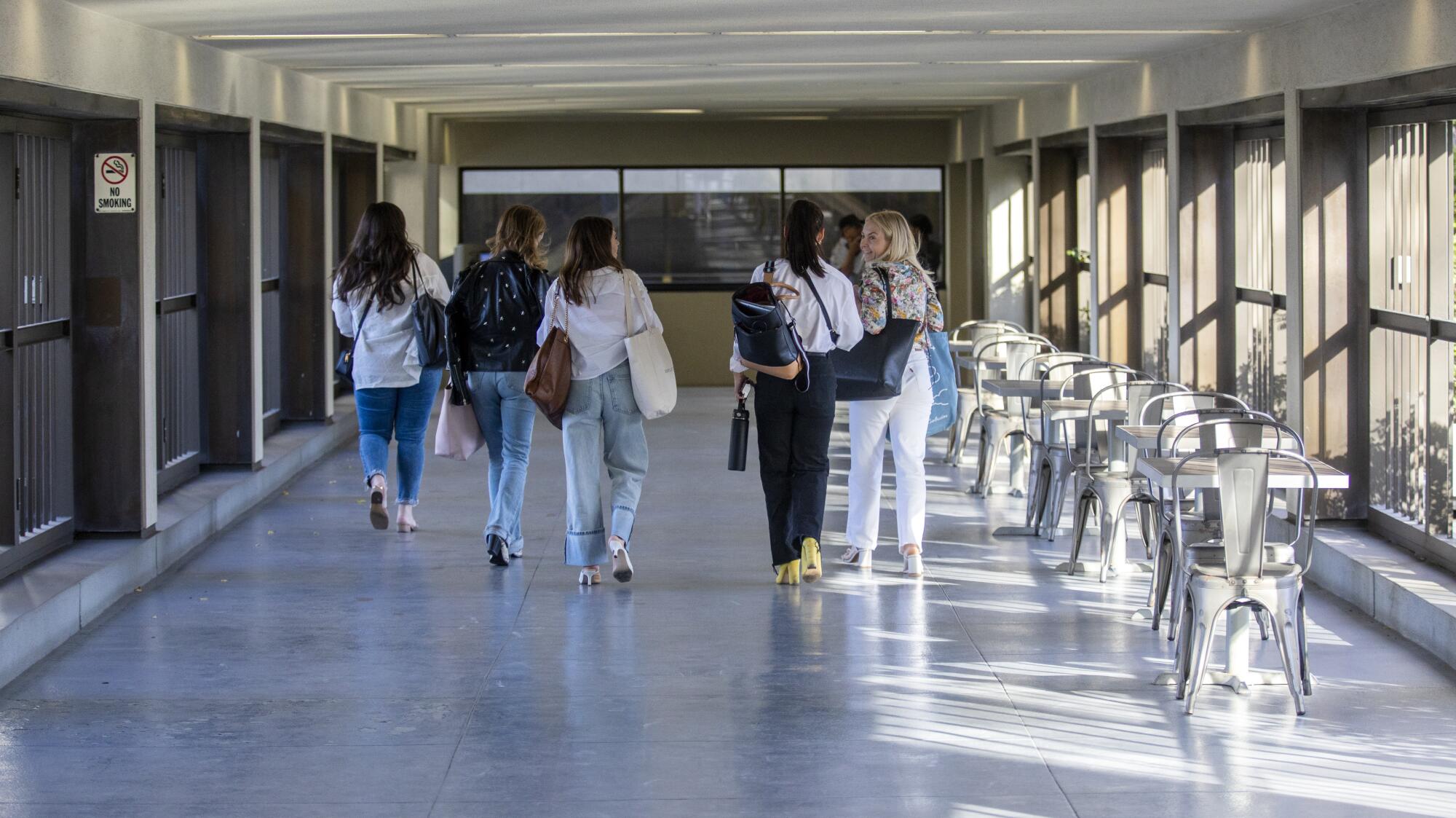
Coleman said smaller tenants have been less aggressive about pulling their employees back into company quarters, which Coleman attributes to various factors.
As the lodging industry struggles to recover from the pandemic, Proper Hospitality has opened a luxury inn in a historic downtown L.A. building. One suite features a pool big enough to swim laps.
Many of the biggest employers are focused on technology, entertainment and media, and tend to view their company culture as a key to recruiting and retaining top talent. Their work — such as developing shows, games and other intellectual products — is often team-based and collaborative.
“If you look at the past, the Facebooks, Google, Amazon and Apples of the world built their entire campus facility structure around culture, amenities and collaboration,” he said. “They realize that is at the forefront of their success, so they’re getting back to that.”
Smaller companies are invested in their culture too, he said, but may be reluctant to order workers back to the office because they’re worried that some people will resist or even resign because they’re worried about their safety.
Some may have decided that commuting is unbearable, or they find co-workers annoying and feel more productive working independently.
Small employers are “concerned about employee pushback” that might include quitting, Coleman said. “If they lose 10% of their workforce, it’s going to have a bigger impact” on their ability to do business than it might for a large employer.
Still, many smaller businesses are coming back to hybrid work schedules, he said, though there are differences among types of companies small and large when it comes to toiling together.
Law firms are among the employers reeling their staffs back to the office, but finance, insurance and real estate companies have generally been more slow about ending the mass working-from-home model, Coleman said.
Some law firms and other professional service firms such as accountants and talent managers that serve the burgeoning entertainment creation industry thrived during the pandemic, real estate broker Todd Doney of CBRE said, and are in some cases planning expansions of their offices even though they may still be working mostly remotely.
“They’ve had some of the best years ever,” he said, with increasing revenue and reduced costs. “No travel or entertainment expenses” during the pandemic and “no need to bring people in for training.”
One of the largest office leases signed last quarter was for an entertainment industry company.
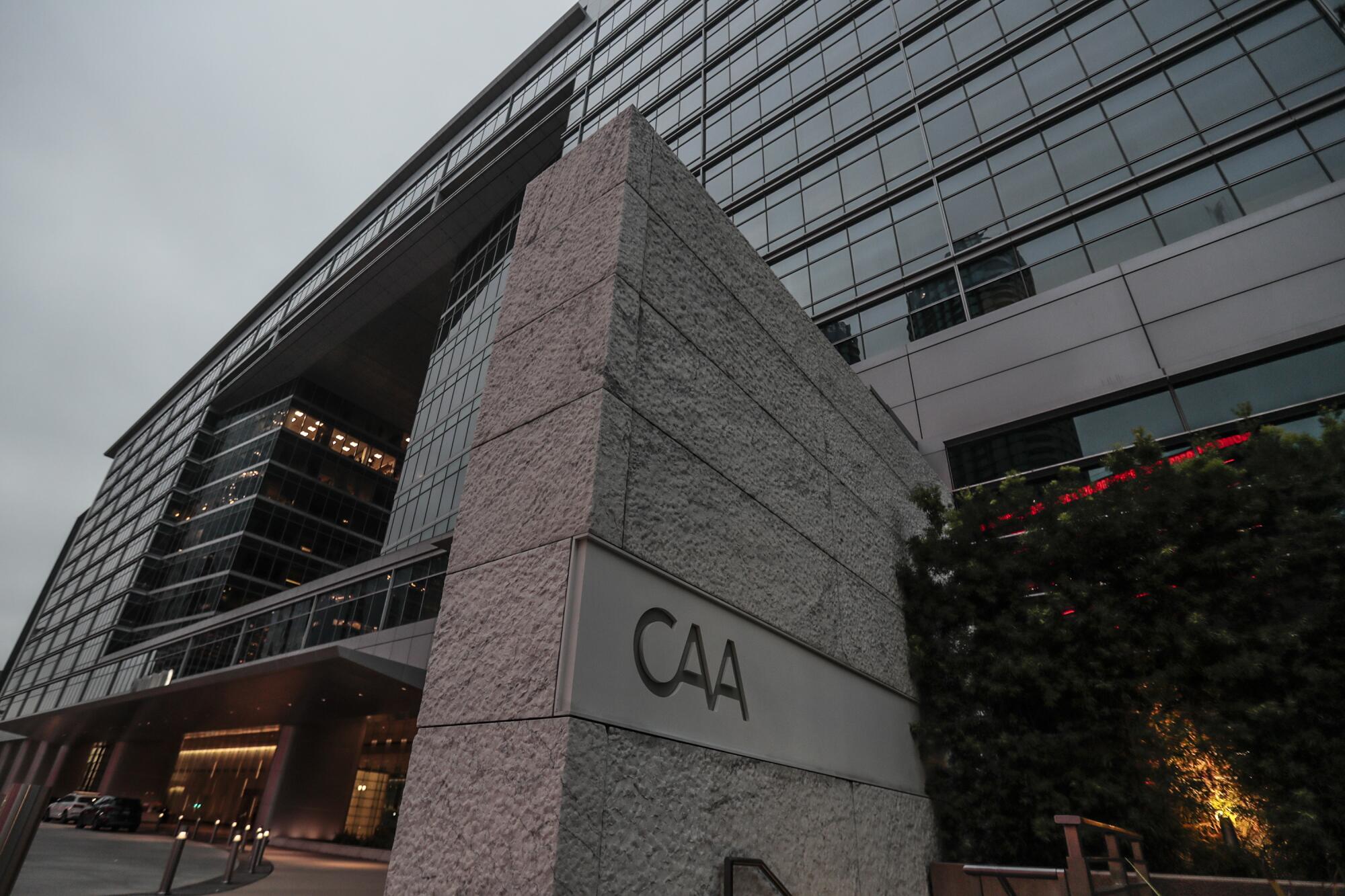
Creative Artists Agency agreed to rent 400,000 square feet at a planned new office tower at 1950 Avenue of the Stars in Century City, CBRE said. That’s nearly the same amount of combined space occupied now by CAA and ICM Partners, which CAA is acquiring. CAA plans to occupy its new offices in 2026.
Century City and Playa Vista were among the most active Los Angeles County markets for office leasing in the first quarter as tech, entertainment and media companies increased their office footprints.
Vacancy (unleased space) in L.A. County was 17.8%, about the same as in the previous quarter but slightly up from the first quarter of 2021. Overall vacancy, including offices available for sublease, was high at nearly 25%, about the same as it was in the fourth quarter but up from 22.6% early last year.
Among the tenants that collectively put nearly 700,000 square feet on the market for sublease in the first quarter were Farmers Insurance in Woodland Hills and Scan Health Plan in Long Beach.
CAA will move into its new headquarters at Century City Center in 2026. The company is expected to acquire rival talent agency ICM Partners this year.
“Available sublease space continues to be stubbornly high,” real estate brokerage Savills said, as prosperous, expanding companies instead choose newer buildings with modern amenities where they can build out their offices to their own specifications.
Other large leases in the first quarter in addition to CAA included apparel maker Nike’s decision to occupy more than 93,000 square feet in Playa Vista and law firm Buchalter’s move to downtown L.A.
In January, Brookfield said that Adidas would rent the top two floors of two interconnected buildings at California Market Center, a massive former showroom complex in downtown’s Fashion District that Brookfield spent more than $250 million on to turn into offices for rent. Another apparel maker, Forever 21, is expected to move its headquarters there in what would be another major lease.
Brookfield renovated the center in expectation that it would appeal to tech and media companies but is pleased to attract apparel companies to what was once one of the biggest wholesale showrooms in the country serving the trade, Barganski said. The property is on the edge of the city’s Fashion District.
“I would suggest that fashion and design is growing viable and thriving, and is very desirous of that type of environment,” he said of the center.
Landlords and brokers predict leasing will pick up in the months ahead as tenants that put plans on hold during the pandemic slowdown decide their next moves.
Already searching for substantial chunks of space are some well-known companies, including Amazon, Apple, Peacock television network, Sony, United Talent Agency, automaker Fisker Inc. and the Los Angeles County Metropolitan Transportation Authority.
More to Read
Inside the business of entertainment
The Wide Shot brings you news, analysis and insights on everything from streaming wars to production — and what it all means for the future.
You may occasionally receive promotional content from the Los Angeles Times.
